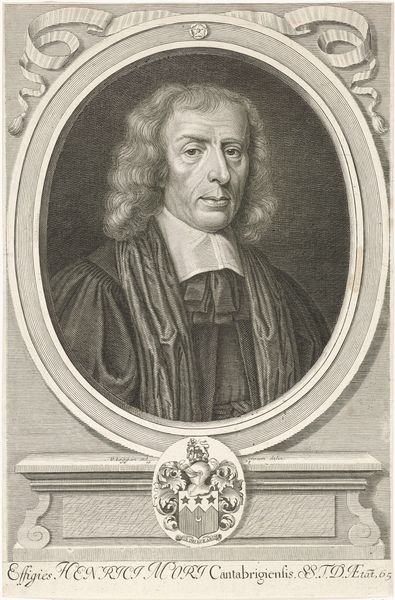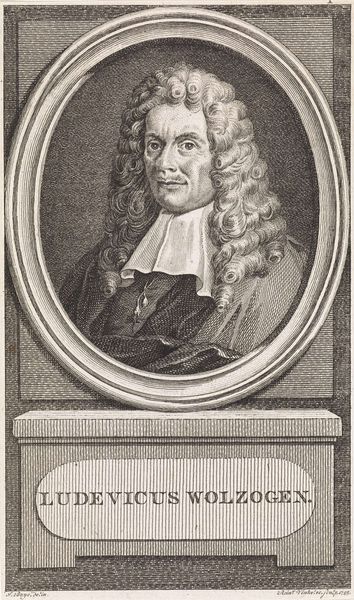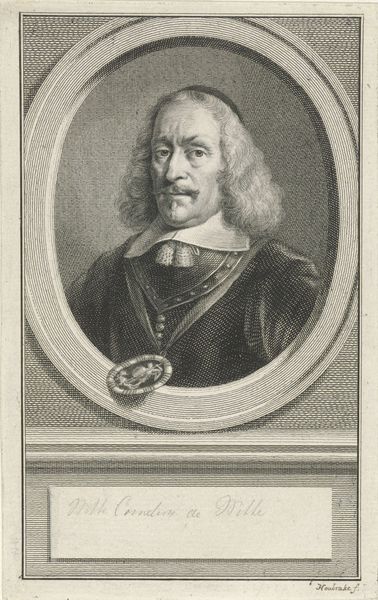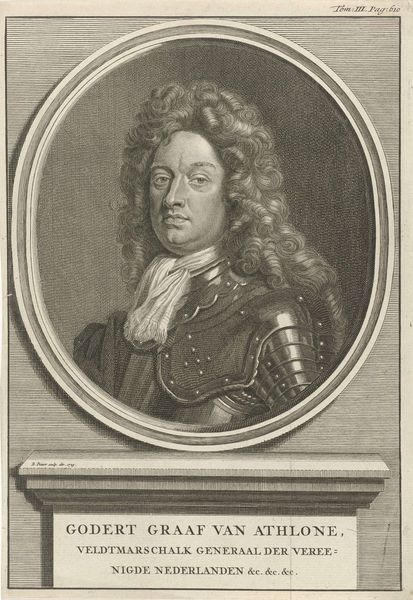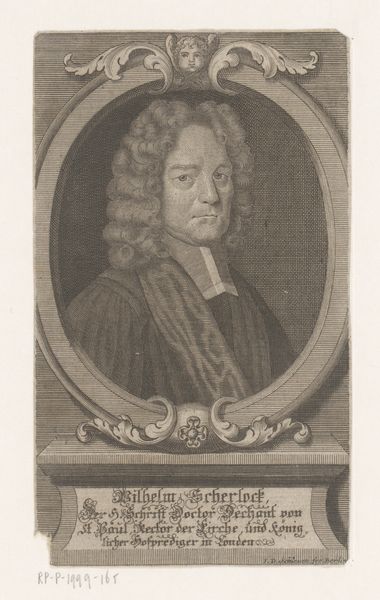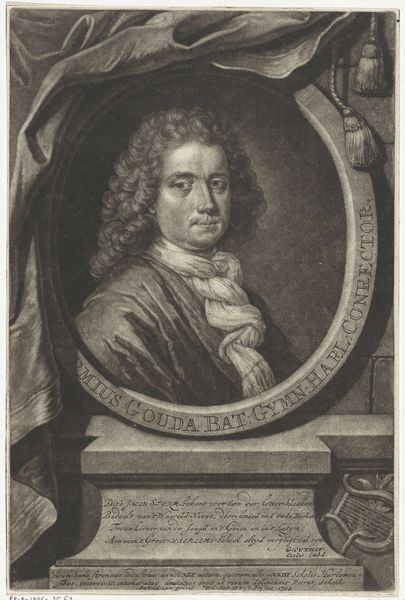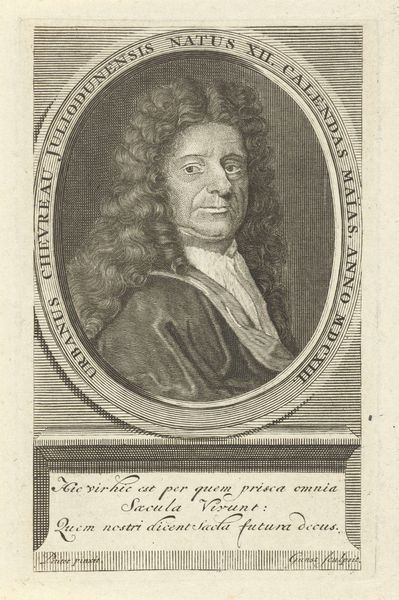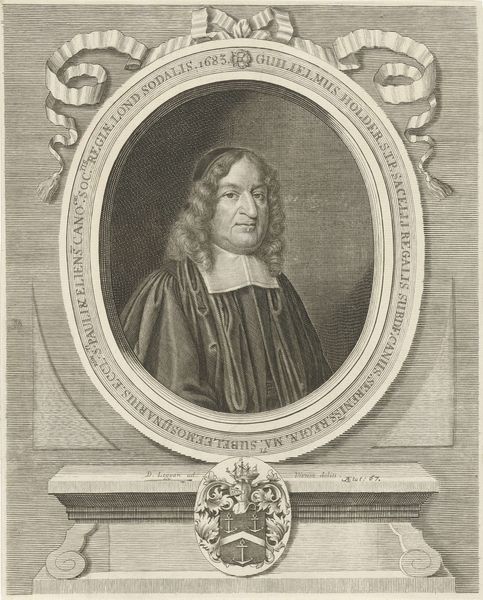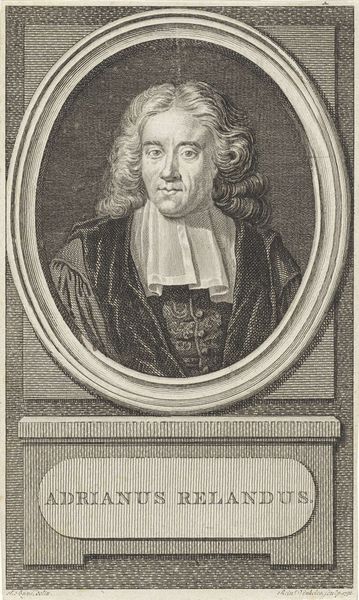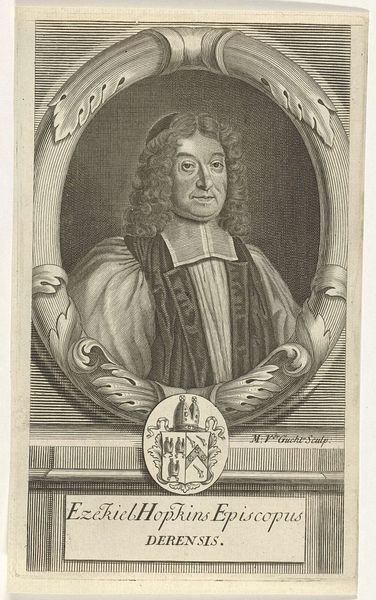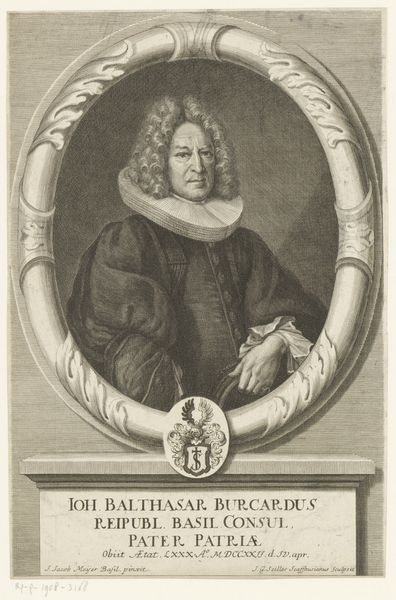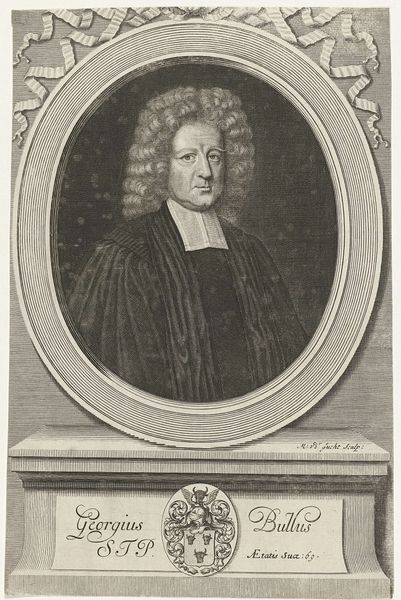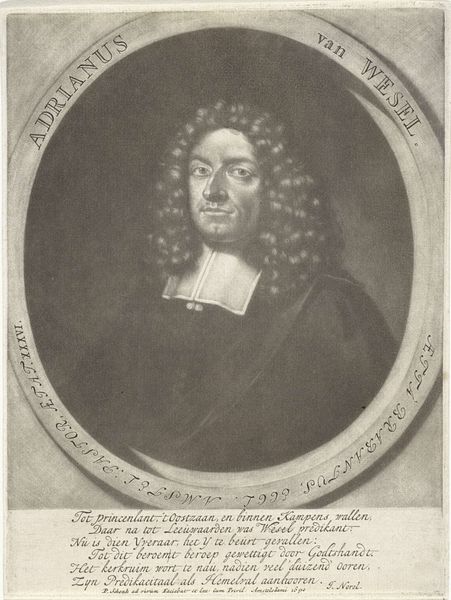
print, engraving
#
portrait
#
baroque
# print
#
old engraving style
#
caricature
#
history-painting
#
academic-art
#
engraving
Dimensions: height 153 mm, width 95 mm
Copyright: Rijks Museum: Open Domain
This portrait of William Sherlock was made by David Coster, likely in the early 18th century. It's an engraving, which means the image was incised into a metal plate, inked, and then printed onto paper. Look closely, and you'll see the incredible detail achieved through this process. Coster used a tool called a burin to carve lines into the metal, varying the pressure to create different depths and widths. This painstaking work allowed him to capture the textures of Sherlock's wig and clothing, and the subtle nuances of his face. Engraving was a skilled craft, demanding years of training and precise hand-eye coordination. Engravings like this were a key part of the print industry, which flourished in Europe. They were used to disseminate information, create portraits of important people, and reproduce paintings for a wider audience. The engraver was thus a crucial, if often unacknowledged, figure in the circulation of knowledge and culture. So, next time you see an engraving, remember the labor and skill that went into its creation, and the role it played in shaping the world around it.
Comments
No comments
Be the first to comment and join the conversation on the ultimate creative platform.
